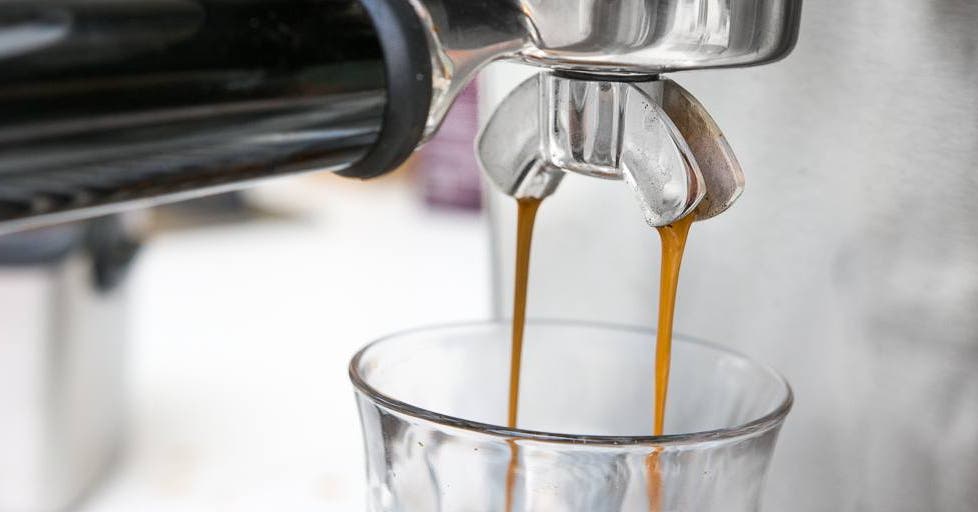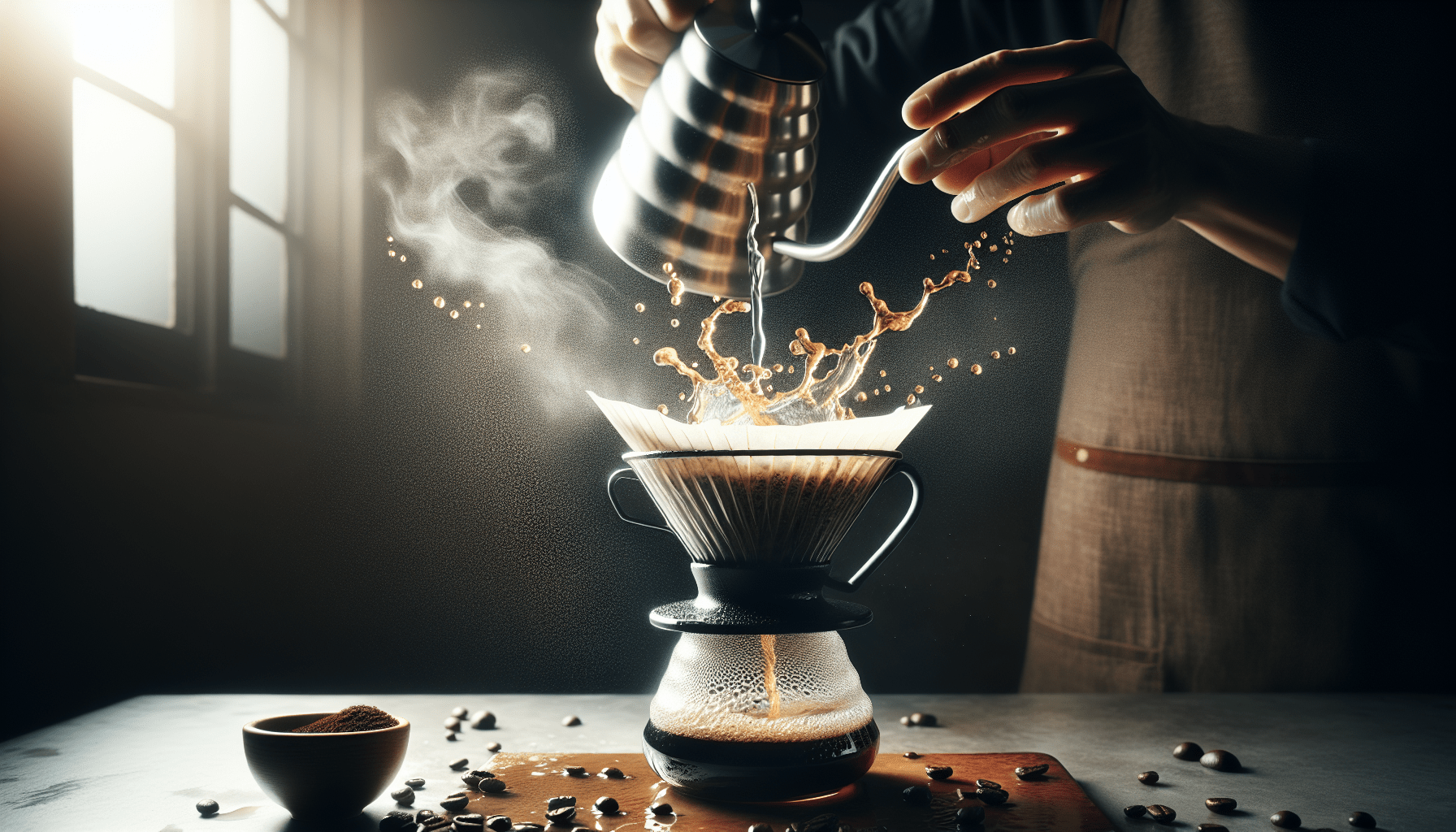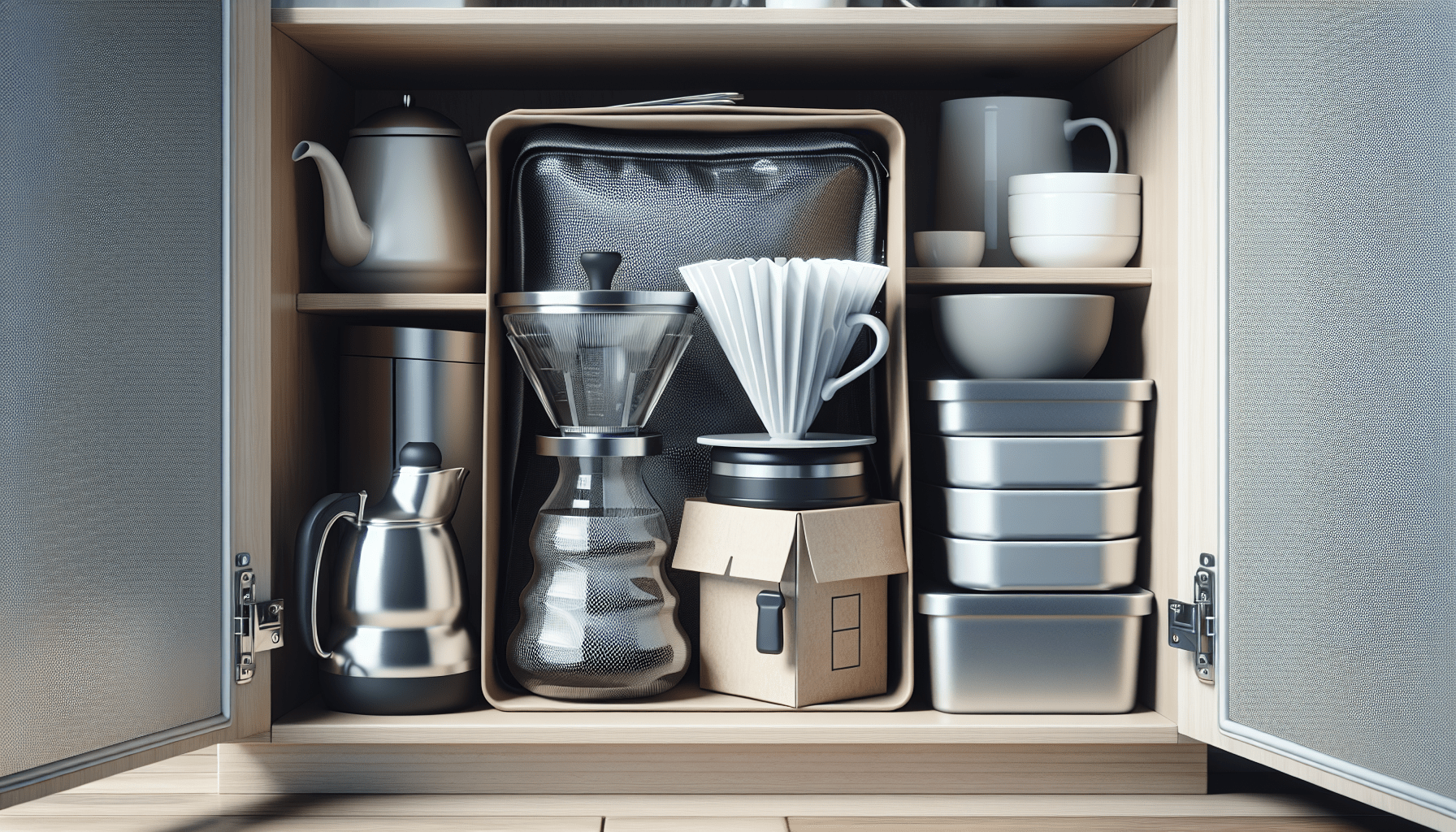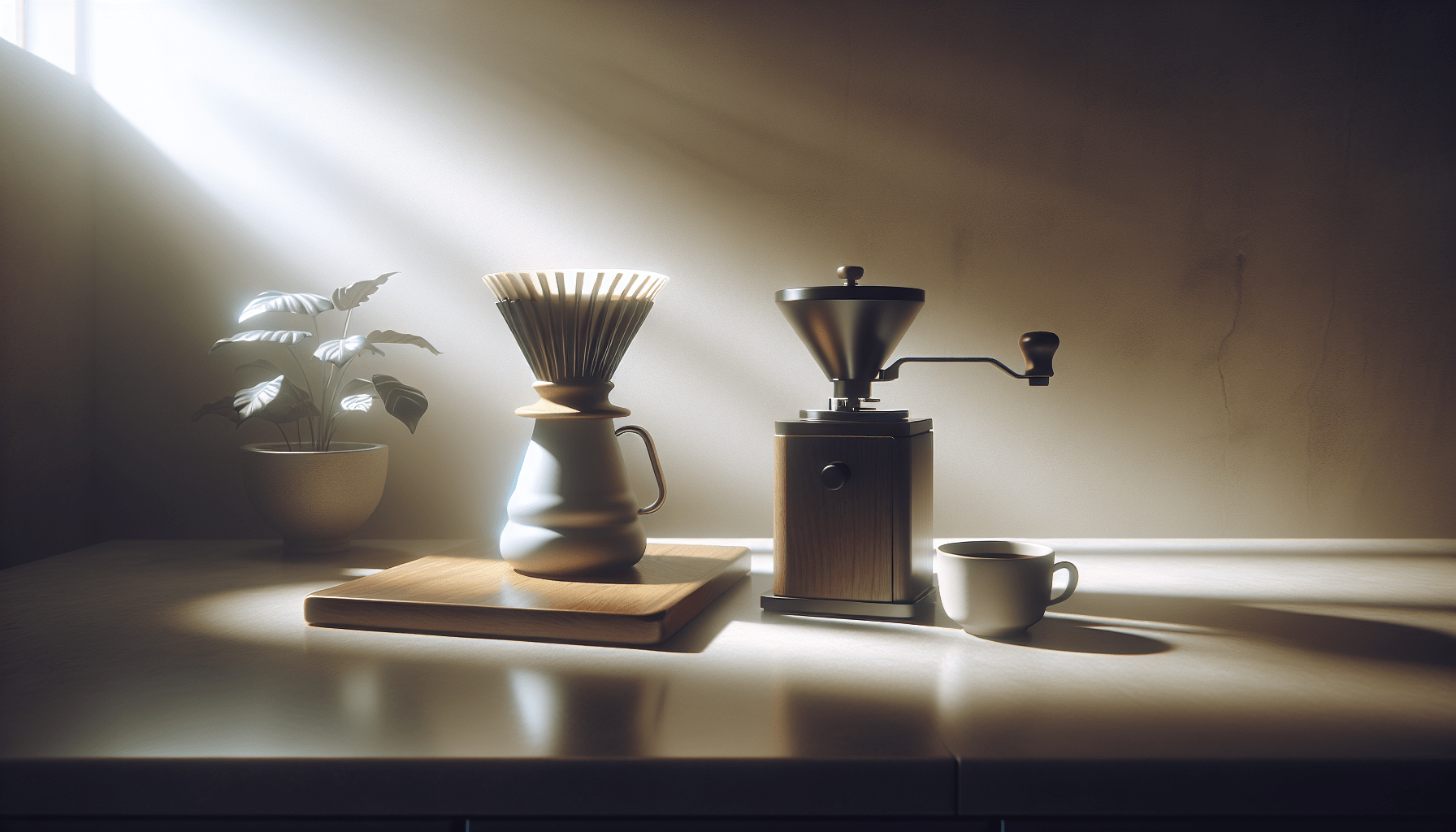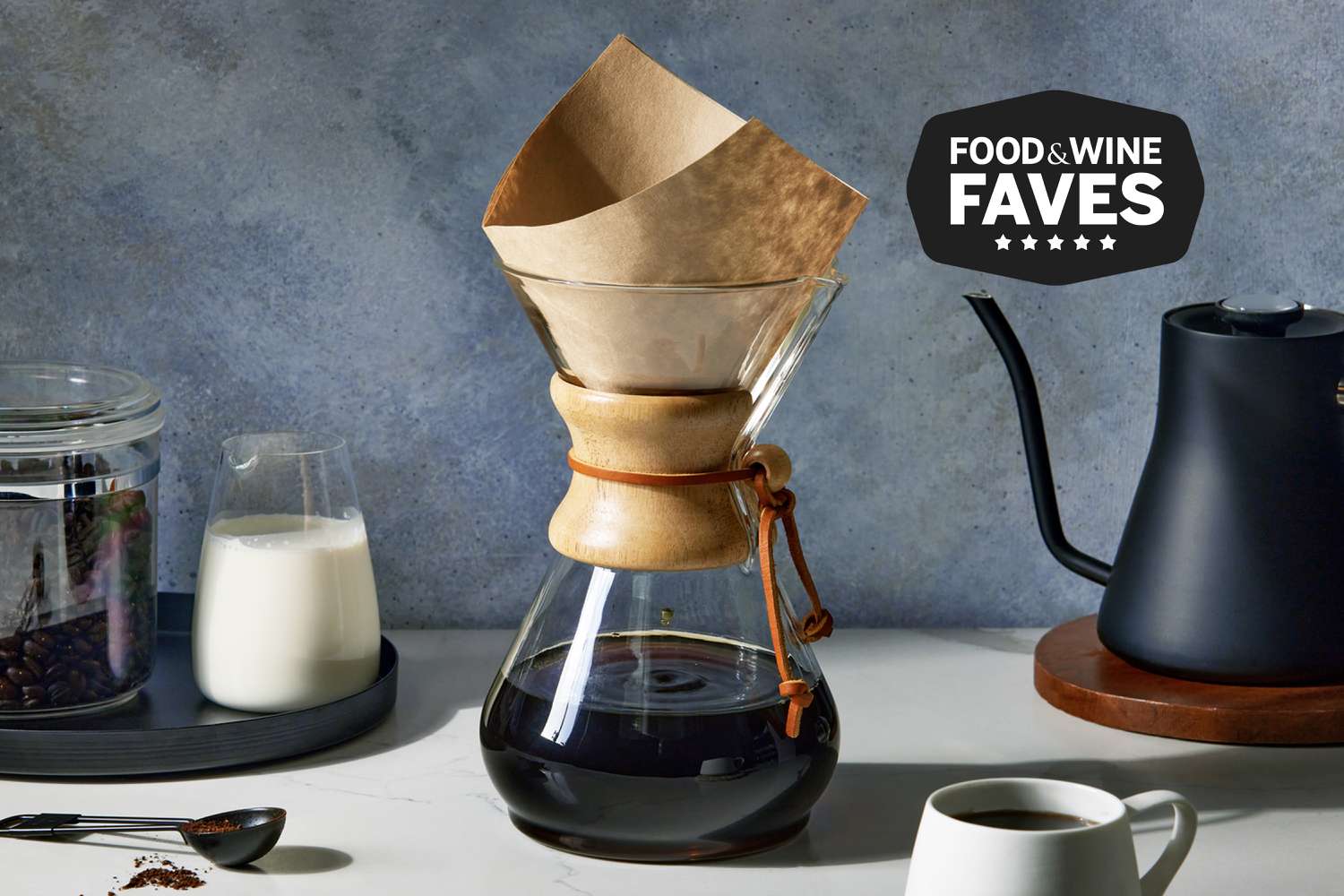Are you a coffee lover who has been pondering the possibility of making espresso with a pour-over coffee maker? Well, wonder no more! This article is here to shed light on whether it’s feasible to achieve that rich, concentrated shot of espresso using a pour-over coffee maker. So, grab a cup of your favorite brew and let’s explore the fascinating world of coffee-making possibilities together!
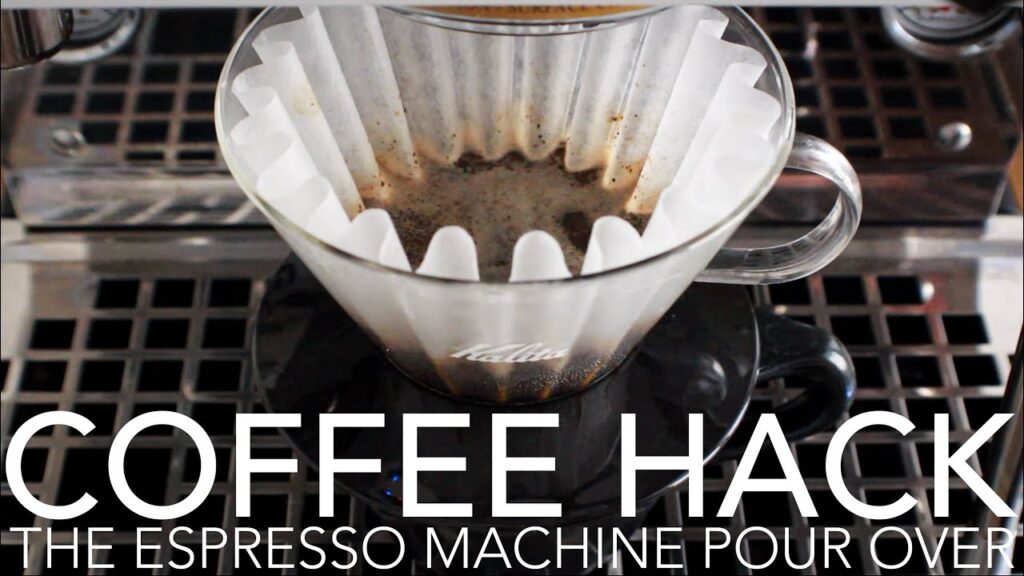
Understanding Espresso and Pour-over Coffee
What is espresso?
Espresso is a highly concentrated coffee beverage that is made by forcing pressurized hot water through finely ground coffee beans. The process of making espresso involves using an espresso machine, which is specifically designed to create the right amount of pressure and temperature needed for the extraction. The result is a rich, bold, and aromatic shot of coffee that is enjoyed by many coffee enthusiasts.
What is a pour-over coffee maker?
A pour-over coffee maker, on the other hand, is a simple brewing device that relies on manual pouring of water over coffee grounds. It consists of a cone-shaped filter holder that sits directly on top of a coffee cup or carafe. The brewing process involves slowly pouring hot water over the coffee grounds in a circular motion, allowing the water to extract the coffee flavors and oils as it passes through the filter.
Differences between espresso and pour-over coffee
While both espresso and pour-over coffee are flavorful and enjoyable in their own ways, there are some key differences between the two. Espresso is known for its strong and concentrated flavor profile, while pour-over coffee tends to have a more balanced and nuanced taste. Additionally, espresso is brewed under high pressure and in a relatively short amount of time, whereas pour-over coffee has a slower extraction process. The equipment used for brewing is also distinct, with espresso requiring an espresso machine and pour-over coffee being made with a simple pour-over coffee maker.
The Science Behind Espresso Extraction
Importance of pressure and temperature
In order to achieve the unique characteristics of espresso, pressure and temperature play crucial roles. The high pressure exerted during the extraction process forces water through the coffee grounds quickly, resulting in a more intense flavor extraction. Meanwhile, the temperature of the water must be carefully controlled to prevent over-extraction or under-extraction of the coffee compounds. Generally, espresso is brewed at a higher temperature than regular drip coffee to achieve its distinct taste.
Extraction time
Another important factor in espresso extraction is the extraction time. Espresso is brewed for a relatively short amount of time, typically around 20 to 30 seconds. This short extraction time allows for the flavors and aromas to be extracted quickly and efficiently, creating the quintessential espresso shot. If the extraction time is too short, the espresso may taste weak and lacking in flavor. On the other hand, if the extraction time is too long, the espresso may become bitter and over-extracted.
How espresso machines work
Espresso machines are designed to create and maintain the high pressure and precise temperature required for brewing espresso. They consist of a water reservoir, a heating element, a pump, and a group head where the coffee grounds are placed and extracted. The water from the reservoir is heated to the optimal temperature and then pumped through the coffee grounds under pressure. This process ensures that the water comes into contact with the coffee evenly and extracts the desired flavors and aromas.
How Pour-over Coffee Makers Work
Brewing method
Pour-over coffee makers work on a simple brewing method that involves pouring hot water over coffee grounds in a controlled manner. The brewer begins by placing a paper or metal filter in the cone-shaped filter holder. Then, the desired amount of coffee grounds is added to the filter. Hot water is then poured slowly and gradually over the coffee grounds, allowing the water to extract the flavors and oils as it passes through the filter. This process can be repeated multiple times to achieve a desired strength and flavor profile.
Water-to-coffee ratio
The water-to-coffee ratio is an important consideration when using a pour-over coffee maker. It determines the strength and flavor intensity of the brewed coffee. Generally, a ratio of 1:16 is considered a good starting point, meaning one part coffee to sixteen parts water. However, this ratio can be adjusted based on personal preference. Experimenting with different ratios can help you find the perfect balance that suits your taste.
Extraction time
The extraction time for pour-over coffee is typically longer compared to espresso. It can vary depending on factors such as the grind size of the coffee, the pouring technique, and the desired strength of the brew. On average, pour-over coffee may take anywhere from 2 to 4 minutes to fully extract the flavors. The slower extraction process allows for a more balanced and nuanced cup of coffee, with different flavors and notes being showcased as the water gradually passes through the coffee grounds.
Can a Pour-over Coffee Maker Produce Espresso?
Lack of pressure
One of the main reasons why a pour-over coffee maker cannot produce true espresso is the lack of pressure. Espresso requires a high level of pressure, typically 9 bars or more, to properly extract the coffee flavors and oils. Without this pressure, the water simply cannot pass through the coffee grounds quickly enough to achieve the concentrated and intense flavor profile that defines espresso.
Inconsistent temperature
In addition to pressure, the temperature plays a crucial role in espresso extraction. Espresso is typically brewed at a higher temperature, around 195°F to 205°F (90°C to 96°C), to optimize the extraction process. Pour-over coffee makers, however, do not have the ability to maintain such precise temperatures. The water temperature can vary significantly throughout the brewing process, leading to inconsistent extraction and potentially impacting the overall flavor of the coffee.
Resulting flavors
Due to the lack of pressure and inconsistent temperature control, using a pour-over coffee maker to produce espresso-like coffee will result in a different flavor profile. The resulting coffee may be strong, but it will lack the intensity and richness that is characteristic of true espresso. The absence of pressure and precise temperature control can also lead to a less pronounced crema, which is the creamy and frothy layer that forms on top of a well-brewed espresso shot.
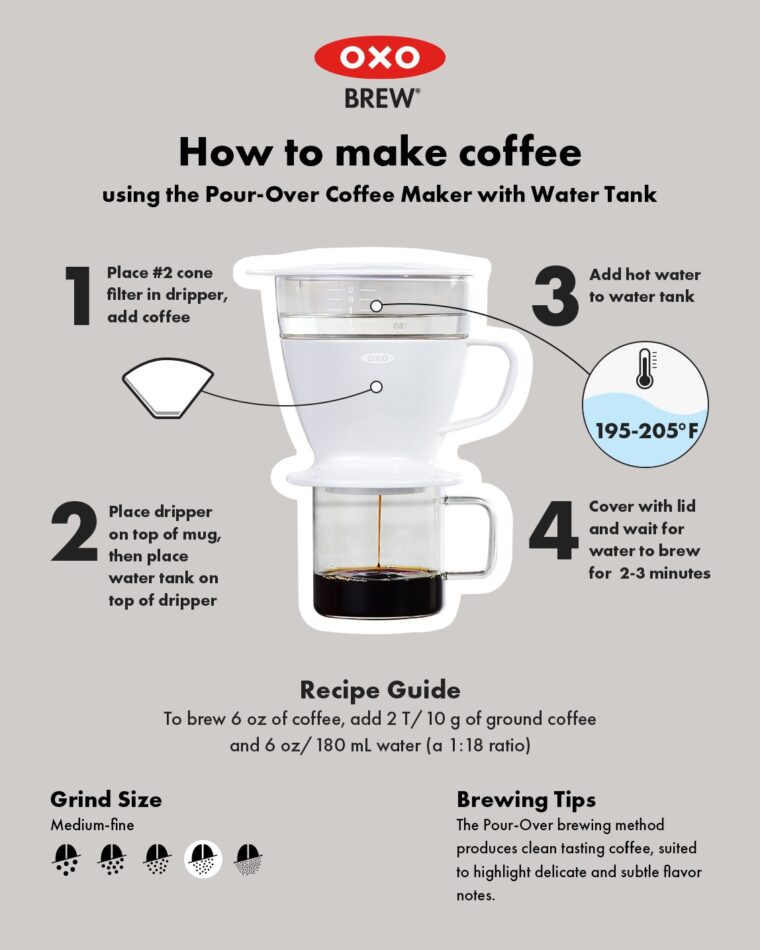
Alternatives to Espresso with a Pour-over Coffee Maker
Strong coffee
While a pour-over coffee maker cannot produce authentic espresso, it is still capable of brewing a strong and flavorful cup of coffee. By adjusting the water-to-coffee ratio and experimenting with different brewing techniques, you can create a brew that offers bold and robust flavors similar to espresso. While it may not have the same concentrated intensity, it can still provide a satisfying coffee experience.
Concentrated coffee
Another alternative to espresso with a pour-over coffee maker is to brew a concentrated coffee. By using a finer grind size and extending the extraction time, you can achieve a brew that is more concentrated in flavor. This concentrated coffee can be diluted with hot water or used as a base for other coffee-based beverages.
Espresso-style drinks
Although a pour-over coffee maker cannot produce true espresso, it can serve as a versatile tool for creating espresso-style drinks. By combining the concentrated coffee brewed with a pour-over method with hot water, steamed milk, or other flavorings, you can recreate popular espresso-based drinks such as lattes, cappuccinos, and macchiatos. While they may not be identical to their true espresso counterparts, they can still offer a delicious and satisfying alternative.
Tips for Brewing Strong Coffee with a Pour-over Coffee Maker
Choosing a dark roast
To enhance the strength and boldness of the coffee brewed with a pour-over coffee maker, opt for a dark roast coffee. Dark roast coffees tend to have a more robust and intense flavor profile, which can withstand dilution and create a stronger cup of coffee. Experiment with different dark roast coffee varieties to find the one that suits your taste preferences.
Grinding finer
Grind size plays a significant role in the extraction process and can greatly impact the strength of the coffee. To brew a stronger cup of coffee with a pour-over coffee maker, consider grinding the coffee beans finer. A finer grind allows for more surface area contact with the water, resulting in a more concentrated extraction and bolder flavors. Be mindful, however, not to grind too fine, as this can lead to over-extraction and a bitter taste.
Using a thermometer
While pour-over coffee makers do not have precise temperature control, using a thermometer can help achieve more consistent results. By monitoring the water temperature during the brewing process, you can identify any significant fluctuations and make adjustments accordingly. Aim for a water temperature between 195°F to 205°F (90°C to 96°C) to maximize the extraction and strength of the coffee.
How to Make Concentrated Coffee with a Pour-over Coffee Maker
Using less water
To create a concentrated coffee with a pour-over coffee maker, simply adjust the water-to-coffee ratio by using less water. Decreasing the amount of water will result in a smaller volume of coffee but one that is more concentrated in flavor. The brewing process remains the same, with hot water being poured over the coffee grounds. However, the reduced amount of water allows for a longer contact time and a stronger extraction.
Brewing with a longer extraction time
Extending the extraction time is another method to brew a concentrated coffee with a pour-over coffee maker. This can be achieved by pouring the water slowly and deliberately, allowing each pour to fully saturate the coffee grounds before adding more. This slower pour allows for a more thorough extraction, resulting in a coffee that is richer and more concentrated in flavor. Experiment with different pouring techniques to find the one that yields the desired strength.
Adjusting the grind size
Grind size also comes into play when brewing a concentrated coffee with a pour-over coffee maker. To increase the strength and concentration of the brew, consider using a finer grind size. Finer grounds provide more surface area for the water to extract the flavors, resulting in a more intense cup of coffee. However, be cautious not to grind too fine, as this can lead to over-extraction and a bitter taste.
Creating Espresso-style Drinks with a Pour-over Coffee Maker
Making a faux espresso shot
While a pour-over coffee maker cannot replicate the true flavors of espresso, it is possible to create a faux espresso shot using concentrated coffee. By brewing a concentrated coffee using the aforementioned methods and adjusting the water-to-coffee ratio, you can achieve a brew that resembles the strength and intensity of espresso. This faux espresso shot can serve as a base for various espresso-style drinks.
Adding steamed milk
One of the defining characteristics of many espresso-based drinks is the addition of steamed milk. With a pour-over coffee maker, you can still enjoy the creamy and velvety texture of steamed milk by using a milk frother or a separate milk steamer. Simply steam the milk to your desired temperature and froth it to create the perfect latte, cappuccino, or macchiato. Combine the faux espresso shot with the steamed milk for a delicious and satisfying beverage.
Experimenting with flavorings
Just like with traditional espresso, a pour-over coffee maker can be a canvas for experimenting with various flavorings. Enhance your espresso-style drinks by adding syrups, chocolate, spices, or extracts to create unique and personalized concoctions. The versatility of the pour-over method allows you to explore different flavor combinations and discover your own signature espresso-style drink.
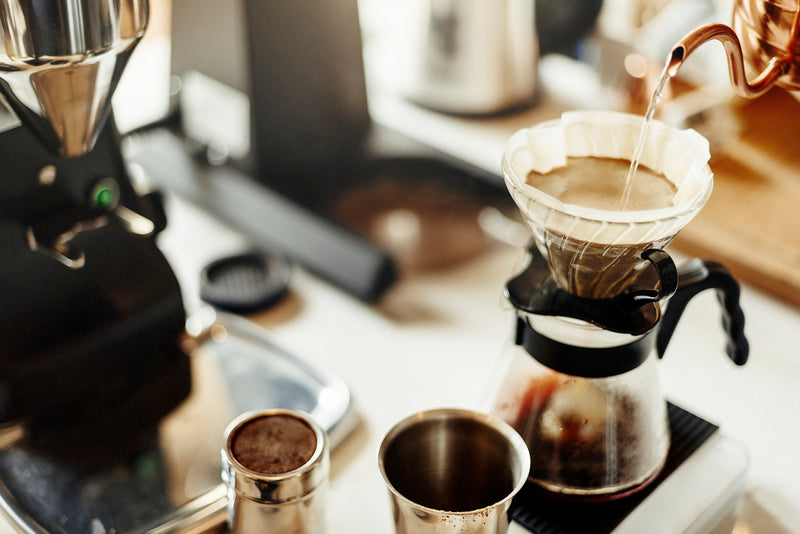
Pros and Cons of Using a Pour-over Coffee Maker for Espresso
Pros:
- Accessibility: A pour-over coffee maker is readily available and affordable, making it accessible to coffee enthusiasts who may not have an espresso machine.
- Customization: With a pour-over coffee maker, you have more control over the brewing process and can customize the flavors and strength of your coffee.
- Versatility: While it may not produce true espresso, a pour-over coffee maker can be used to brew a variety of other coffee-based beverages, providing a versatile brewing option.
Cons:
- Lack of pressure: The absence of high pressure in a pour-over coffee maker limits its ability to create the concentrated and intense flavors of espresso.
- Inconsistent temperature control: Pour-over coffee makers do not have precise temperature control, which can result in variations in flavor and potential under or over-extraction.
- Limited crema: The absence of pressure and specific equipment in a pour-over coffee maker means that the resulting espresso-like coffee may not have a pronounced crema layer.
Conclusion
While it may be enticing to try and make espresso with a pour-over coffee maker, it is important to understand its limitations. The lack of pressure, inconsistent temperature control, and resulting flavor differences make it clear that a pour-over coffee maker cannot truly replicate the flavors of espresso. However, this does not mean that a pour-over coffee maker is without its merits. It excels in brewing strong and flavorful coffee, offers versatility in creating espresso-style drinks, and can be a great alternative for those who do not own an espresso machine. Exploring alternative brewing methods and embracing the unique characteristics of a pour-over coffee maker can lead to a world of delightful coffee experiences.
